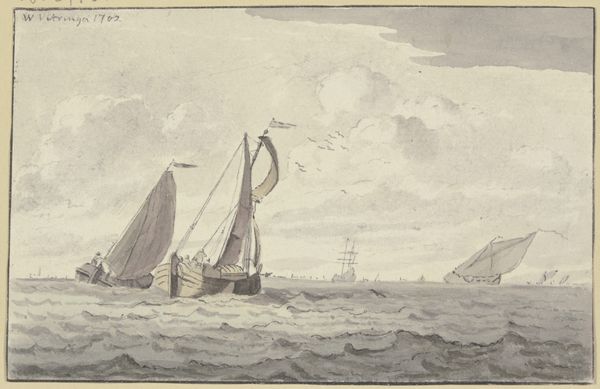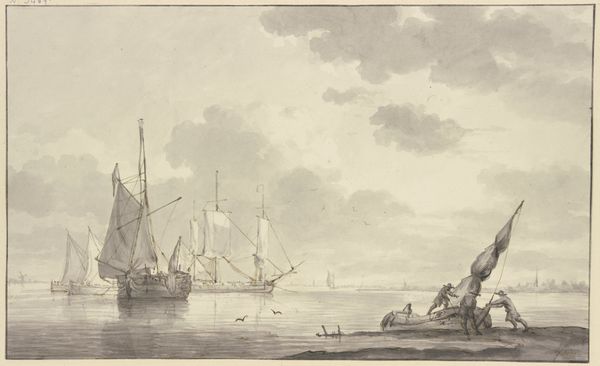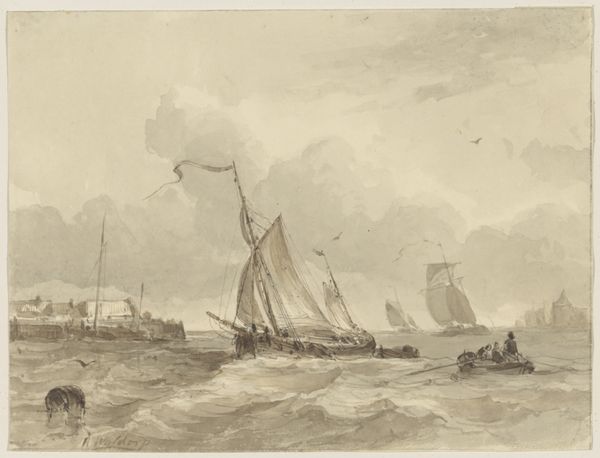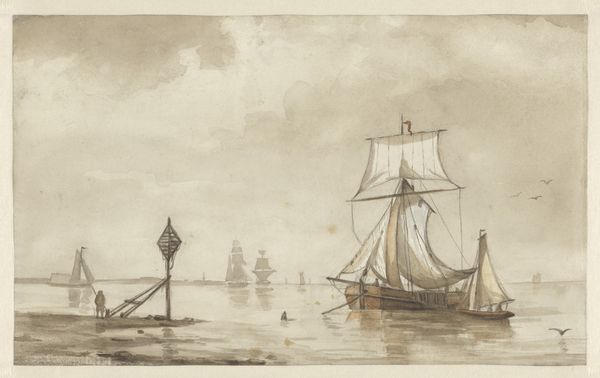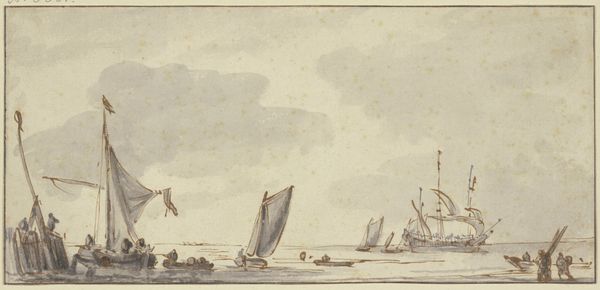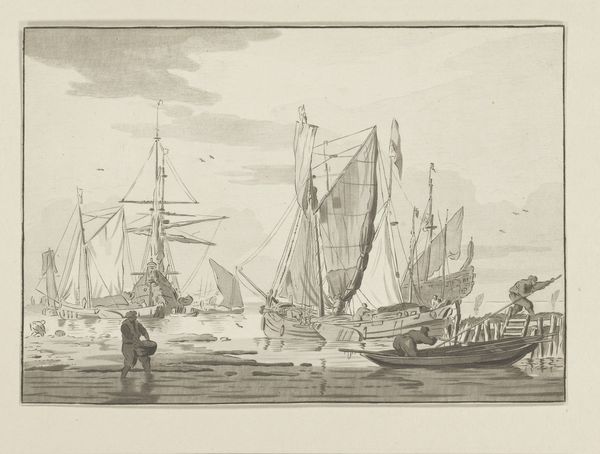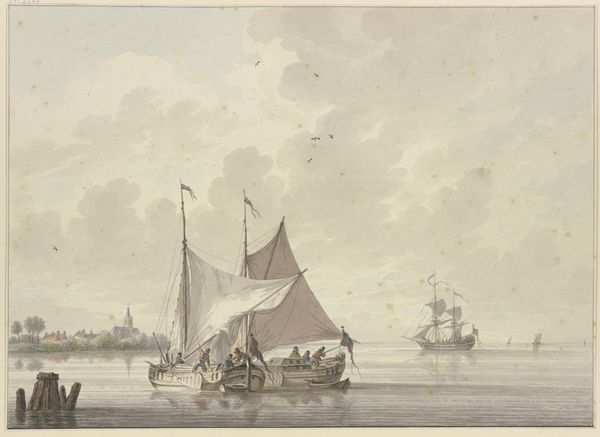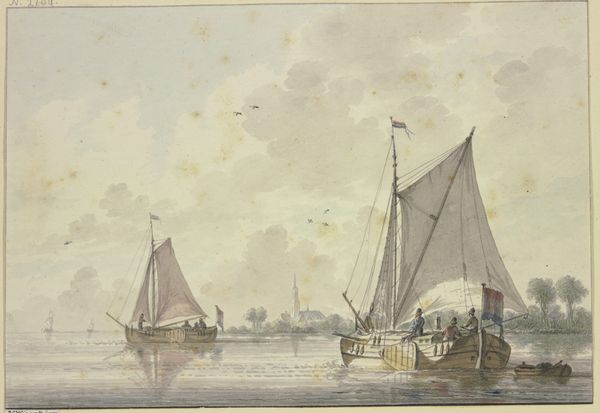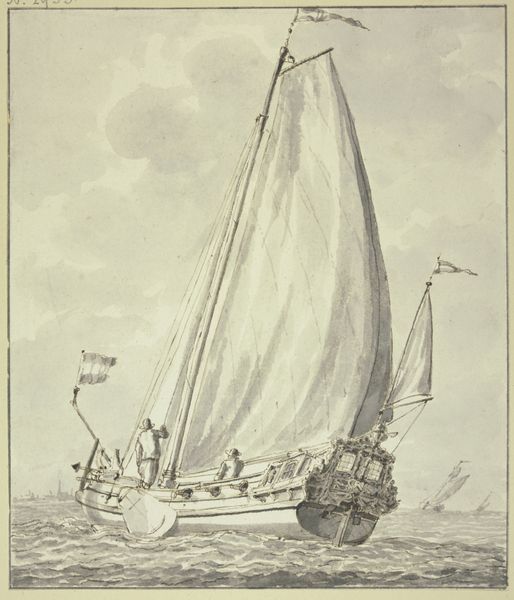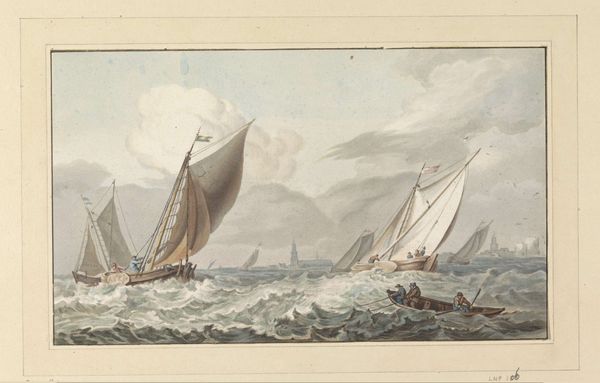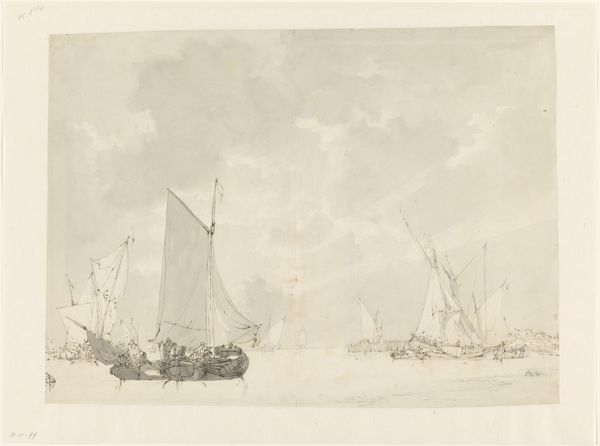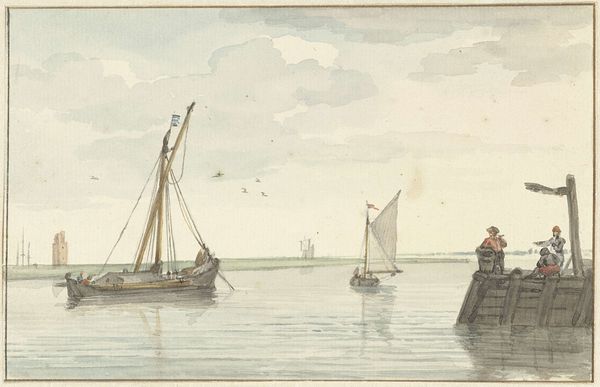
Dimensions: height 172 mm, width 305 mm
Copyright: Rijks Museum: Open Domain
Editor: So, this is "Schepen op zee," or "Ships at Sea," made sometime between 1829 and 1879 by Ary Pleijsier. It's a pencil and watercolor drawing housed here at the Rijksmuseum. I find the subdued color palette quite evocative; the whole piece seems shrouded in mist, almost dreamlike. What compositional elements strike you as significant in this work? Curator: The dominant feature is clearly the cluster of vessels occupying the foreground, offset to the left of the pictorial plane. Consider how the artist manipulates form: the rounded hulls of the boats in contrast to the sharp angles of their sails create a subtle tension, an interplay between stability and dynamism. Notice the textural variations achieved through distinct applications of watercolor. Where do you perceive evidence of gestural brushwork versus controlled washes? Editor: I see the looser, gestural marks in the rendering of the waves, giving them a sense of motion and turbulence. While the sails seem more controlled. Almost flat. Curator: Precisely. Also, reflect on the negative space surrounding the ships. It isn't merely empty; it functions as an active component, emphasizing the isolation of these vessels against the immensity of the sea. What impact do the muted colors have on the overall composition and its aesthetic effects? Editor: The limited color palette contributes to the painting's overall harmony. By muting all colors Pleijsier might aim to convey a serene environment and create a feeling of openness. The lack of bright colors contributes to a subdued atmosphere. Curator: A perceptive observation. The chromatic restraint directs attention to form and texture, and, notably, reinforces the atmospheric effect that you mentioned. It prompts us to consider the formal devices through which mood is generated. Editor: So, the artist focuses not only on the subject, but also carefully uses color and brushstrokes to achieve a certain expression, Curator: Yes, through attention to form and materials we can access much. And that encourages a close observation of those details, too.
Comments
No comments
Be the first to comment and join the conversation on the ultimate creative platform.
